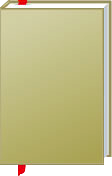

 |

|

The average rating for The struggle for the American curriculum, 1893-1958 based on 2 reviews is 4 stars.
Review # 1 was written on 2011-09-25 00:00:00 Donna Ingram Donna IngramThe Struggle for the American Curriculum is not a book to entertain; it is a book to be read in order to understand the sordid history that begat today's subject-oriented, objective-laden, test-obsessed curricula. Kliebard reveals the American curriculum is not neutral. It was the results of many tense compromises (between racist pseudo-scientists and ideologues) and economic exigencies (the rise of industry, the Great Depression, and the Cold War). The curriculum that emerged from these struggles was a highly politicized animal, often divorced from actual research, teacher input, and students’ needs. Perhaps the most tragic irony is how little we seem to have learned from these past struggles; in the ongoing debates on curriculum reform, we’re racing back to where we started. The Struggle for the American Curriculum helped me understand the multifaceted power relationships that shape curriculum. No longer do I see American curriculum as a neutral entity. Whether it is Charles Elliot reifying the Western ethnocentrism in the Committees of 10 and 15, or the Texas Board of Education approving ethnocentric history textbooks in today's draconian test culture, we cannot shake the value-laden decisions that prize one group’s knowledge over another. Most frightening is the pervasive sense of déjà vu I felt in reading Kliebard’s book. The curricular reforms we believe will ameliorate inequality are too often the ghosts of races already run. In our efforts to close achievement gaps, we may be stuck perpetuating them. |
Review # 2 was written on 2017-02-18 00:00:00 Marlen Brandox Marlen BrandoxI enjoyed this broad overview of the history of education. It identifies the primary movements and parties over the decades. It only implicitly relates them to public education today, but you can see the trends and patterns. This book doesn't get into the specific content of the curriculum (whether certain formulas are taught, or how much time to allocate to the Revolutionary War). It's big picture. There are pragmatic concerns and theoretical concepts in play, but at its core, there are worldview issues that really drive some of these trends: "The question may then be raised as to why this struggle was so bitterly fought. The most immediate answer is that it was a battle for control over the forms of knowledge as well as the values that an important social institution would pass on to the next generation." (page 248, right at the end of the book). |
CAN'T FIND WHAT YOU'RE LOOKING FOR? CLICK HERE!!!